Japanese Crane and More: Five Fauna from Japan
Thuy Fang
Posted on May 24, 2024
Share:
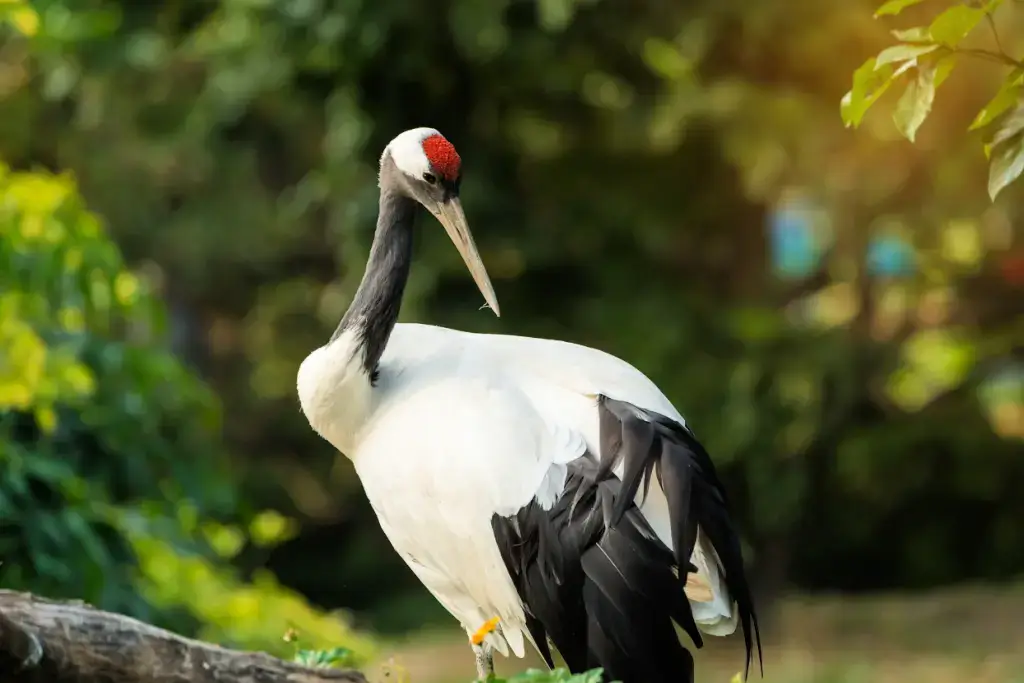
Japan is a captivating destination well-known for its picturesque natural landscapes. It is also home to many animals that are hard to find elsewhere. Each species living here contributes to this country’s excellent fauna characteristics and holds significant cultural and societal importance in the country. Let’s explore the Japanese crane and four other animals in Japan.
Japanese Crane
This bird species is also known as the red-crowned crane or tancho. Found primarily in the eastern regions of Hokkaido, Japan’s northernmost island, these cranes are also native to parts of China and Russia. Japanese cranes are a sight with their snow-white feathers and vibrant red crowns. They are very tall, about 150-158 cm (59-62 in), and their wings can spread up to 2.5 meters (8.2 inches) wide.
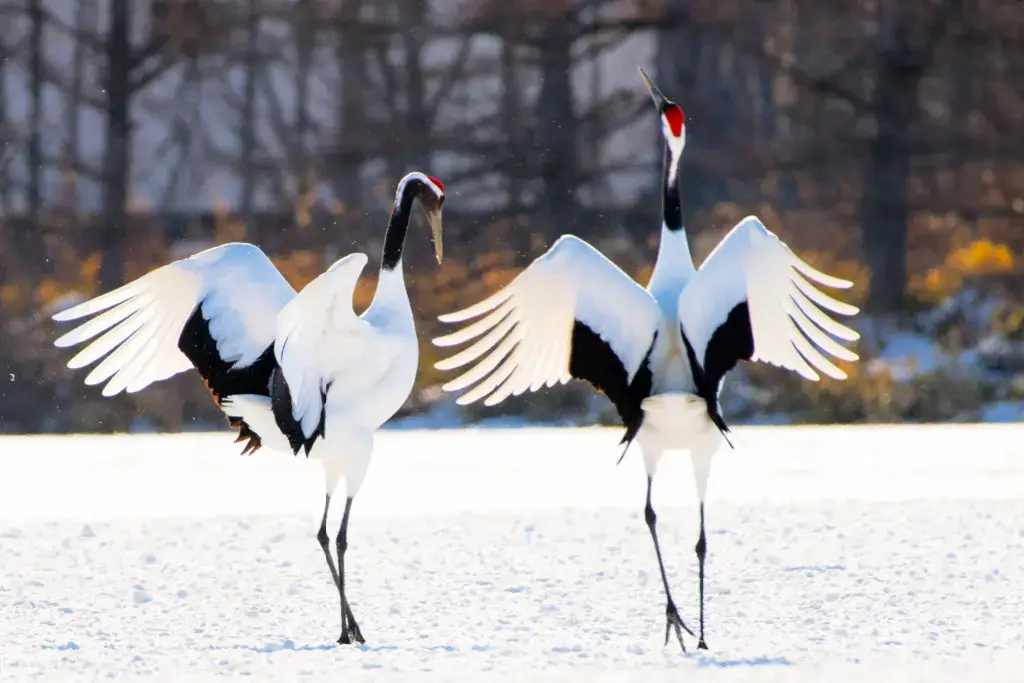
Their appearance is not just about beauty; it’s also about survival. Because they adapt to cold temperatures, these birds thrive in marshes and wetlands, where they feed on a varied diet of insects, amphibians, fish, and grains. In addition, they are famous for their loyalty, often pairing for life and performing elaborate courtship dances that strengthen their bond.
The cultural significance of these cranes is profound. These majestic creatures symbolize good fortune, longevity, and peace and have captured people’s hearts for centuries. In Japanese folklore, these birds are believed to live for 1,000 years and possess the power to grant wishes. Senbazuru (the tradition of folding 1,000 origami cranes) is a testament to this belief, symbolizing hope, healing, and resilience.
Furthermore, cranes also appear in classic paintings and on wedding kimonos, representing love, happiness, and thankfulness. Even though they are endangered, Japanese cranes still amaze and inspire people. Conservation efforts are underway to protect these iconic birds and their habitats.
Japanese Macaque
The Japanese macaque, or snow monkey, is a fascinating monkey native to Japan. These monkeys are unique in many ways, from their ability to thrive in cold climates to their intriguing social behaviors. Found on the islands of Honshu, Shikoku, and Kyushu, they live in various habitats, including subalpine and subtropical forests. With their thick brown or gray fur and pink faces, they are well-adapted to the snowy winters of northern Japan.
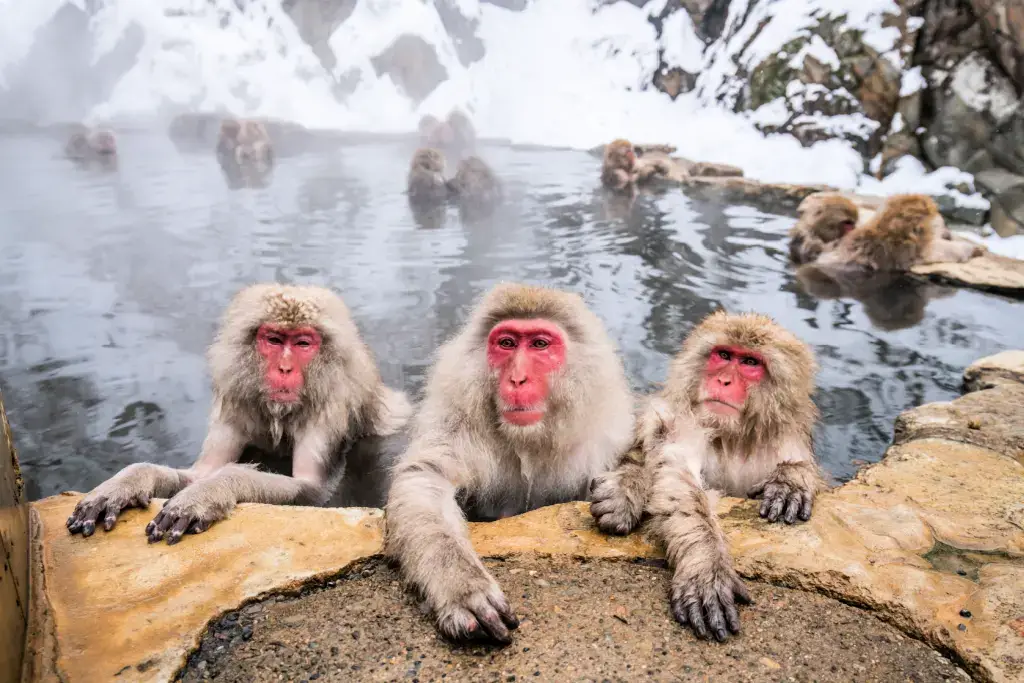
Macaques eat various things, such as insects, plants, fruits, and seeds, and their diet changes with the seasons. They live together in groups, and grooming is essential for staying clean and friendly. This species is famous for its intelligence and distinctive behaviors, such as washing sweet potatoes in river water and soaking in hot springs during winter to stay cozy.
Historically, Japanese macaques have played a significant role in Japanese culture. Their images appear in folklore, art, and even traditional proverbs. These monkeys are symbols of resilience and adaptability. Despite the challenges of their environment, they have developed behaviors that help them survive and thrive.
Are you looking for great snacks while exploring the fauna of Japan? Check out Sakuraco! Sakuraco delivers traditional Japanese snacks, teas, sweets, and snacks from local Japanese makers directly to your door so you can enjoy the latest treats from Japan!
Sika Deer
The sika deer is an exciting animal originally from East Asia but is now found in other places. These deer have a brownish-red coat with white spots that help them blend into the forest. In winter, their fur darkens, and the spots become less noticeable. Sika deer are good swimmers who make many sounds, from quiet whistles to loud screams.
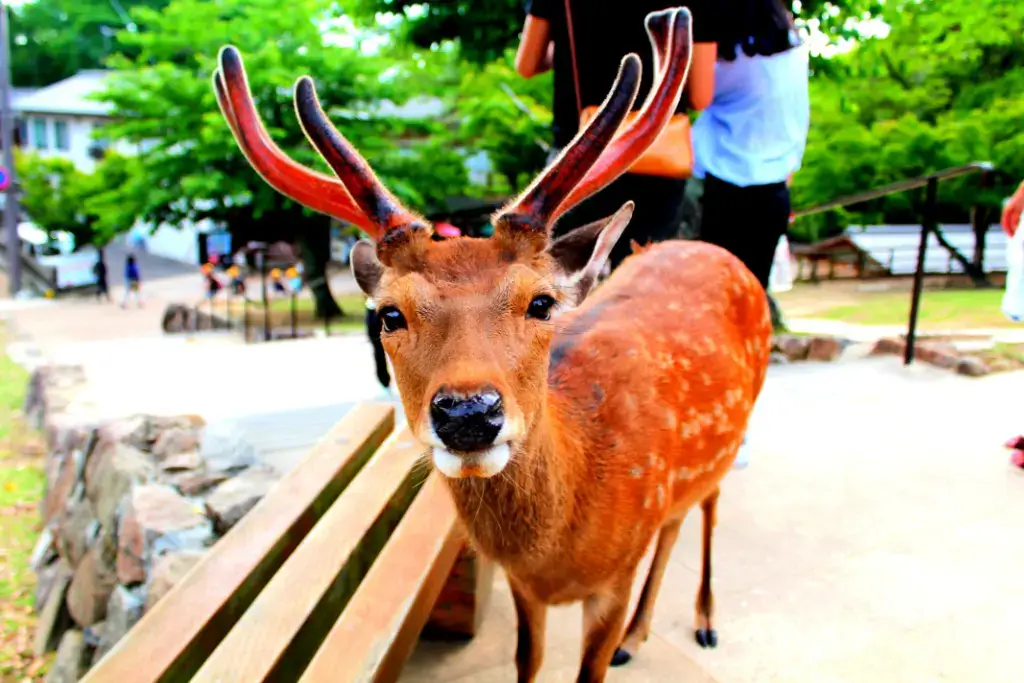
These deer have a unique social structure. The females live in small family groups with their young, while the males are typically solitary but may group together occasionally. Sika deer mostly eat grass, herbs, and many other plants. They also nibble on leaves and fruits depending on the time of year.
In Japanese culture, especially during the age of the samurai, deer were considered gentle and graceful animals representing peace and wealth. Today, we can easily find some Shinto temples and parks in Japan where deer roam freely.
Ayu Sweetfish
Ayu sweetfish are a much-loved freshwater fish in Japan. These slender fish, typically 15 to 25 centimeters (6 to 10 inches) long, shine with a silvery hue. Ayu sweetfish eat algae and other plants, using their unique special teeth to scrape them off rocks.
They mostly live in clean rivers and lakes but sometimes venture into coastal marine waters. They can move harmoniously between rivers and the sea. And this special behavior makes them famous. Besides, they are also renowned for their annual upstream journey during the summer for spawning.
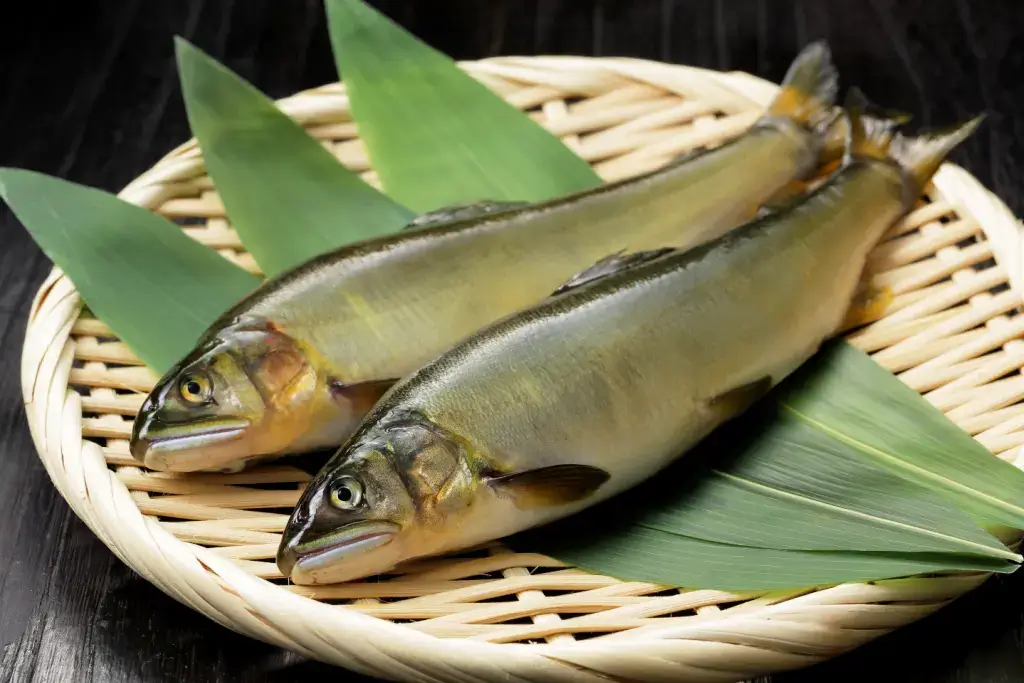
Moreover, Ayu sweetfish also play a central role in Japanese culture and culinary traditions. This fish is a symbol of purity and vitality. In terms of cuisine, there are numerous ways to cook this fish! Grilling them with salt is a favorite because it brings out the original flavor. Ayu sweetfish boasts a subtly sweet flavor. You can enjoy the whole fish, including their organs, which are nutritious. Additionally, many people also like to fry them or make tempura.
Iriomote Cat
The Iriomote cat is an exclusive wild cat that lives only on the Okinawan island of Iriomote. These cats have spots and stripes, just like a mini tiger! Their fur is mostly gray and brown, with cute white spots behind their ears. An iriomote cat is a bit smaller than a domestic cat. They usually look cute with round ears and big, beautiful amber eyes.
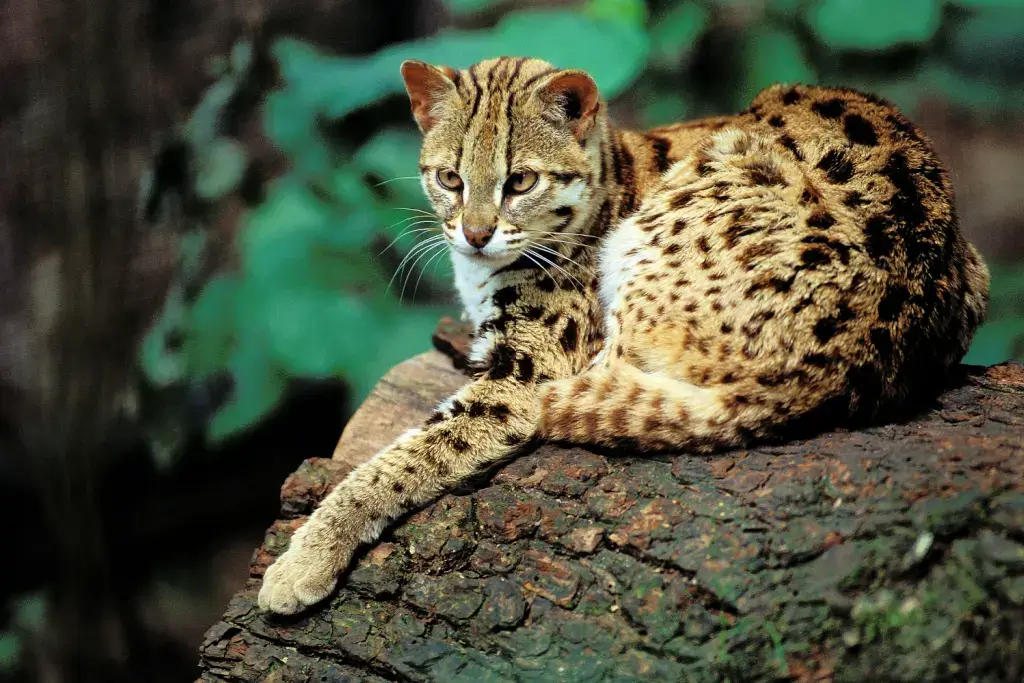
Japanese people often call it the “Iriomote mountain cat” because it likes to hang out in the mountains. They can climb trees, swim in the water, and explore the forests of Iriomote. They’re most active when the sun starts to set, which is when they hunt for food. Speaking of food, they can eat all sorts of prey, like birds, bats, and even sea creatures like crabs and fish. With their lovely appearance and adventurous spirit, the Iriomote cats are like the island’s guardians, adding to their magical charm.
Why are the Japanese crane and other animals unique?
Overall, the Japanese crane and other animals stand out for their extraordinary characteristics and deep cultural significance in Japan. Not only do they contribute to Japan’s diverse fauna, but they are also symbols of hope and embody beliefs in the best aspects of life. Their presence today reminds us of the need to strive to protect species and the natural environment around us. Let us know in the comments which of these remarkable creatures attracts you the most!

Discover authentic flavors with Sakuraco
Get Sakuraco 

Discover authentic flavors with Sakuraco
Get Sakuraco 
Related Articles

Hatsumode: Why Is It Japan’s Most Important Tradition?
Hatsumode is the first visit to a shrine or temple in the New Year in Japan, and it is one of the country’s most important traditions. Every year, millions of people participate, demonstrating the profound connection between this custom and daily life.

Japanese Fish Bait: The Beautiful Art of Kebari
Kebari are traditional hand-tied flies used for freshwater fishing in Japan, especially in mountain streams where small insects form the main diet of native fish. Instead of bright plastic lures, kebari use feathers, thread, and natural materials to create subtle movements in the water.

Japan Holidays Guide: Relax, Explore, and Delight in Festive Fun
As the year draws to a close, everywhere buzzes with preparations for the holidays, and Japan is no exception. Despite the cold winter weather, you can feel warmth in the scenery, decorations, and festive activities across the country. Let’s explore the unique experiences of holidays in Japan that many people dream of enjoying at least once in their lifetime!

Tokyo Gardens: Five Beautiful Traditional Japanese Gardens to Visit
Tokyo gardens offer a relaxing escape for visitors looking to get a breath of fresh air. However, Tokyo has more than just the typical gardens we see in the West. Let’s explore five traditional Japanese gardens and what makes them unique!



